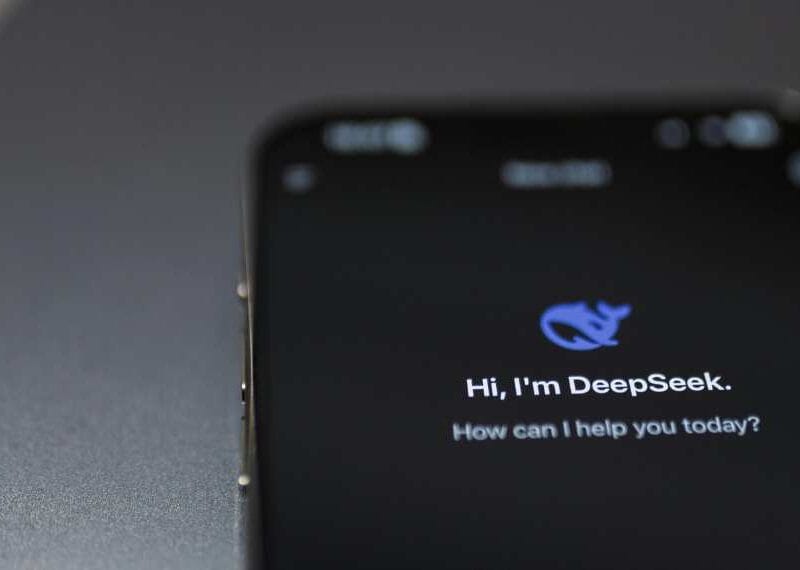Thought Leadership 2.0: Expert Tips to Thrive in the AI Revolution
The Artificial Intelligence (AI) revolution is not just a technological shift; it’s a fundamental reshaping of industries, careers, and the very fabric of work.
In this era of unprecedented change, authentic and actionable thought leadership has become more crucial than ever.
As AI permeates every sector, the challenge for leaders isn’t merely to understand its capabilities, but to articulate its implications, guide its responsible integration, and help stakeholders navigate its complexities.
How can thought leaders genuinely thrive in this AI-driven landscape, cutting through the noise and offering insights that truly matter?
This article distills critical perspectives from leading business executives, strategic visionaries, and seasoned tech professionals.
They reveal the core principles and practical strategies for effective thought leadership in the age of AI, offering a blueprint for those seeking to build influence, foster responsible innovation, and empower their communities through genuine wisdom.
Read on!
Brian Fontanella
If you want your voice to matter in the AI conversation, you need to get out of “theoretical” mode and speak from lived experience.
At Keystone, we didn’t just talk about how AI might impact managed IT—we tested tools, ran pilots, and shared what worked and what didn’t. That grounded perspective gave us credibility with clients who were hearing all the hype but didn’t know who to trust. Thought leadership that’s rooted in action, not opinion, cuts through the noise.
My recommendation: pick one area in your field where AI is making real changes, try something, and document the outcome—good or bad. Share the results, what surprised you, and what others can learn from it. The more we lead by doing, the stronger and more practical the thought leadership becomes.
Nick Mikhalenkov
To stand out in an AI-saturated space, thought leaders need to stop sounding like copy machines. People crave clarity, courage, and context. Don’t just echo trends, challenge them. Share messy lessons, not just shiny wins. If you’ve face-planted, say so. That’s what builds trust.
Be visible where your audience hangs out. It’s not enough to drop a LinkedIn essay once a month. Join conversations, ask real questions, reply like a human, not a headline generator.
Also, don’t hide behind “we.” Use your name. Tell us what you think, not what the industry might think. Authority comes from owning your stance, not hedging bets.
The irony? AI might flood the market with words, but it’s your voice that cuts through the noise. Strip out the filler, keep it punchy, and don’t be afraid to piss someone off (in a smart way). That’s how movements start.

Nick Mikhalenkov
SEO Manager, Nine Peaks Media
Kambria Dumesnil
With the change and impact AI is bringing, active leadership starts by looking internally.
You need to understand your own values and leadership tendencies enough to know how to show up in these spaces. Only then can you define what your AI red-lines are (things you want to protect) and identify your AI blind spots. This helps build a culture that supports aligned AI.
For example, a recent poll I ran showed that ROI guided most AI decisions for over 50%. Risk and compliance for 14%. Neither of these are wrong and understanding what drives you means you can intentionally create spaces for other voices and perspectives to look holistically at AI in the workplace.
With this type of AI culture you can make a more aligned decision that not only has high ROI but also considers the people’s impact, risk, transparency, and other key factors.

Kambria Dumesnil
Founder, AI Innovation Lounge
Hema Vyas
The leaders who will thrive and lead change recognize that heart-centered leadership, leading with authenticity, agility, and awareness creates the context for responsible technological integration as well as optimal business performance. True thought leadership must now bridge technological advancement with human values.
My recommendation is to position yourself at the intersection of humanity and technology, articulating visions that honour innovation, ethics and the human spirit. Have the intention to ensure that every decision at every level of a business regarding AI brings long-term human and business value.
These are the voices of wisdom that will ensure that, rather than diminishing, AI serves humanity’s highest potential.

Hema Vyas
Psychologist & Partner at Human-Centred AI
Jay Whiteley
AI is poised to disrupt careers and industries and meaningful and actionable thought leadership is now more important than ever. What do you advise to support these voices?
To strengthen thought leadership in the age of AI-driven transformation, I recommend a three-part approach:
Create “AI Test Kitchens” to generate collaborative work by hand.
Literate junior team members mentor senior executives with deep AI literacy to ensure that new insights bubble up to infuse your public story.
Non-traditional option: This bottom-up framework goes against the typical top-down thought leadership cast and surfaces fresh use cases you may miss.
Experiment with immersive, interactive formats.
Go beyond slide decks to hands-on workshops, live data-dive webinars, or AI-supported peer forums where your audience can see insights in real time.
Recently we ran a virtual lab where partners could adjust algorithm parameters live, which resulted in real conversations and shareable soundbites that drove our credibility.
Because by fusing rapid-cycle content creation with unorthodox mentorship structures and immersive engagement, you turn passive messages into participatory, memorable experiences — and along the way humbly embolden voices that could be washed away by the AI tide.

Jay Whiteley
Chief Revenue Officer, RedAwning
Bryan Philips
To strengthen thought leadership in the AI era, focus on clarity, specificity, and usefulness.
Don’t just predict—demonstrate. Show what AI is changing in your industry, how you’re adapting, and what others can do next.
Real examples backed by outcomes cut through noise. The most trusted voices in 2025 won’t be loud—they’ll be grounded, proven, and relentlessly practical.

Bryan Philips
Head of Marketing, In Motion Marketing
Paul Bichsel
Focus on clarity, not hype.
The best thought leaders right now are the ones explaining how AI changes work—not just that it will. Share real use cases, lessons learned, and frameworks others can apply. To stand out, speak from practice, not theory—and post consistently where your peers already listen.
Michelle Garrison
Something that keeps coming up in my conversations with people is how many brilliant analysts are providing actionable frameworks for AI adaptation, but they’re speaking to audiences who can’t enact meaningful change. Which seems like a massive waste of insight and energy.
I believe the breakthrough that we need can only happen when we create structured pathways between thought leaders and corporate boards, government officials, and industry association executives.
These voices need to move beyond writing articles and speaking at conferences. They need direct lines to people controlling budgets, hiring decisions, and policy directions. That’s where real change happens.
What this looks like practically is establishing “emergency advisory networks” where companies facing AI disruption can rapidly connect with thought leaders who’ve developed specific solutions. I believe the most effective amplification occurs when leaders stop broadcasting to general audiences and start having targeted conversations with power holders.
Maybe we need to treat this like a crisis response system—creating hotlines where executives can access proven strategies for workforce reskilling, industry pivots, and economic adaptation from leaders who’ve already mapped out actionable paths forward. Though I’m probably oversimplifying how quickly organizations can actually pivot once they have the right guidance.

Michelle Garrison
Event Tech & AI Strategist, We & Goliath
Shantanu Pandey
I would say that the idea of AI derailing careers and industries is a valid concern for many, and it’s precisely why strong, actionable thought leadership is so critical right now.
To strengthen these voices, my primary recommendation is to focus on practical, real-world application and evidence.
It’s not enough to just talk about the potential problems or solutions as we need leaders who are actively experimenting with AI, understanding its nuances, and then sharing concrete examples of how it’s impacting different roles and sectors.
This means moving beyond abstract discussions to case studies, pilot programs, and even open-source initiatives where the effects of AI can be observed and analyzed.
Thought leaders should also prioritize collaboration across industries and disciplines. The challenges posed by AI are too complex for any single person or company to solve alone.

Shantanu Pandey
Founder & CEO, Tenet
On behalf of the Techronicler community of readers, we thank these leaders and experts for taking the time to share valuable insights that stem from years of experience and in-depth expertise in their respective niches.
If you wish to showcase your experience and expertise, participate in industry-leading discussions, and add visibility and impact to your personal brand and business, get in touch with the Techronicler team to feature in our fast-growing publication.













